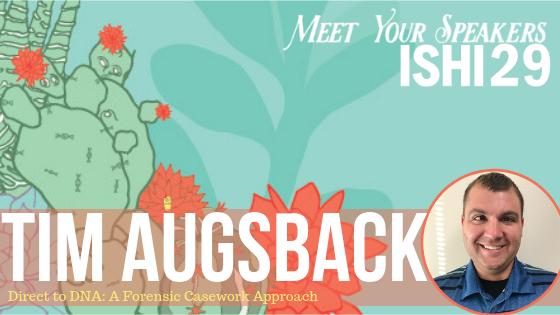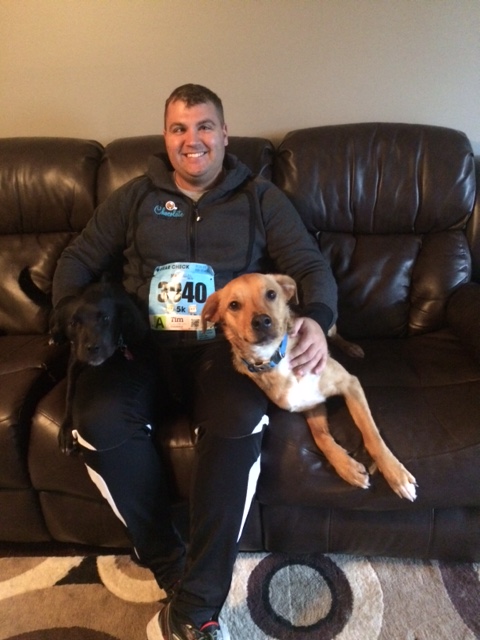The Ohio Bureau of Criminal Investigation (BCI) confronted a state-wide Sexual Assault Kit (SAK) testing initiative to eliminate the backlog of untested kits. As part of this initiative, over 13,000 kits were submitted. In order to process these kits in-house, BCI developed a tiered approach that enabled scientists to complete processing in a five year timespan. Data generated from the SAK Initiative was analyzed in a study by BCI and the Center for the Future of Forensic Science at Bowling Green State University to determine variables that increase the probability of obtaining a CODIS eligible profile*. This study was used in the development of a direct to DNA testing approach that could be applied to current casework to enhance the quality and potentially reduce the turnaround time.
In his presentation at ISHI, Tim Augsback (Forensic Scientist, Ohio Bureau of Criminal Investigation) will present a summary of the successes and challenges for direct to DNA implementation by the Ohio BCI.
We sat down with Tim and asked him to describe the approach BCI took to address their backlog and what key learning they took away.
Hi Tim, thanks for chatting with us today. Many labs are currently tackling their own backlog and looking for ways to improve efficiency, so your talk will be very beneficial!
Labs across the U.S. have been working through their sexual assault kit backlogs. What was the situation like in Ohio?
In 2011, Ohio Attorney General Mike DeWine launched Ohio’s Sexual Assault Kit Testing Initiative to test previously untested rape kits from throughout the state. Forensic scientists with the Ohio Bureau of Criminal Investigation (BCI) have fully tested the approximately 14,000 sexual assault kits that were submitted as part of this initiative by nearly 300 Ohio law enforcement agencies.
What approach did BCI take to process these kits?
BCI drastically cut down on body fluid testing and essentially eliminated sperm searching. We initially did AP (presumptive) testing and then progressed to a collect and run process. Depending on case details, we could test all items on a case where the samples appeared less likely to generate a foreign profile or we could target specific probative items for a first round test. If nothing probative was found in the first round, exhaustive testing would be done on the remaining samples. Almost all samples went through an organic differential extraction. Ohio BCI also uses a teamwork approach in which different analysts perform certain portions of the testing process much like an assembly line.
Can you describe the study that was performed by BCI and the Center for the Future of Forensic Science at Bowling Green State University? What was the goal of the study? How did the results impact casework at BCI?
The study was done to determine which factors had the most impact on the probability of obtaining a CODIS eligible profile. Several factors were examined including time from assault to collection, time from collection to submission of the kit, age, consensual partner, and type of assault reported.
What key learning did you take away from this study?
Some of the best samples to run were vaginal samples, neck/ear swabs, breast/chest swabs, unlabeled skin swabs, and underwear samples. These findings came as little surprise to most analysts. The samples collected directly from an area identified in the assault information are a good place to start testing.
Do you have any advice for labs looking to implement similar procedures?
I would recommend the teamwork approach we have taken in our lab as well as the “forklift” approach to test all sexual assault kits. Keep open lines of communication or make training available for SANE nurses and law enforcement agencies in your jurisdictions. This keeps everyone on the same page with regard to the best approaches for tackling previously untested kits as well as current cases. It would also be helpful for investigators to understand that this will result in an increased workload for law enforcement once CODIS hits start to return.
As someone who works in a lab, is there anything you’d want to say to the general public or lawmakers about the backlog?
It may take a lot of time and effort to tackle a large number of previously untested kits, but it is worth it. Approximately a third of the cases tested as part of Ohio’s Sexual Assault Kit Testing Initiative resulted in a CODIS hit, and a lot of dangerous offenders were identified, including serial offenders who had previously gone undetected. It is also helpful to look at older cases that were not originally worked for DNA due to previous CODIS requirements involving consent partner standards. Those requirements have been updated, and some of those untested kits could now be worked.
How did you become interested in forensic science?
I was originally in school to become a doctor. During college I had a change of heart. I then Googled ‘what can I do with a Biology degree?’ and saw ‘forensic scientist’ near the top of the list. I began looking at graduate schools for a field I had previously only seen on CSI and NCIS and I have never looked back.
What do you feel is the biggest challenge that forensic laboratories are facing today?
I think many labs face large caseloads and could always use more staff or resources.
What tips would you give to someone who is just starting out in the forensics field, or what is the best advice that you’ve received?
I would encourage newer scientist to avoid underestimating the importance of good communication skills. You use them quite a bit when interacting with other law enforcement agencies or testifying in court.
For those still deciding whether to attend, what is your favorite thing about ISHI, or what are you most looking forward to this year?
I have never been to ISHI but I am really excited to hear the talks about all the work being done in our field. I’m also looking forward to the dinner event at Corona Ranch.
What’s one thing that others may not know about you?
I have a goal of one day owning every dog.
WOULD YOU LIKE TO SEE MORE ARTICLES LIKE THIS? SUBSCRIBE TO THE ISHI BLOG BELOW!



